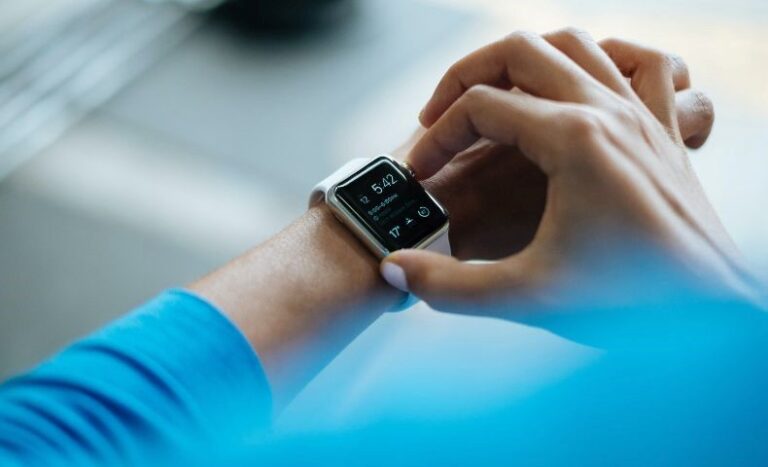Do you spend a lot of time on your devices? If so, you’re not alone. Millions of people worldwide spend much of their time looking at or touching screens, whether on a smartphone, tablet, or wearable device like a smartwatch.
Wearables are becoming increasingly popular in the consumer electronics sector. While they and other digital devices make it much easier for people to stay connected, wearables can have far-reaching implications, especially in the content marketing industry.
A Brief Overview of Wearables
The wearable technology market is expected to snowball in the coming years, reaching around $265.4 billion by 2026. Most consumers think of smartwatches as the prime example of wearable technology. However, there’s a strong chance that other wearables — such as smart glasses, jewelry, clothing, and augmented reality headsets — will proliferate.
Some future wearable tech could have exciting features such as body sensors to monitor health metrics and renewables like solar to keep devices charged. There’s no way to know for sure what tech companies like Apple and Google will try to incorporate into the wearable technology market. One thing for certain is wearables will continue evolving to make lives easier.
5 Ways Content Consumption Changes Due to Wearables
Due to their convenience and connectivity, business professionals often use wearable tech, especially smartwatches. Reading a text message or answering a phone call on a smartwatch is often quicker and easier, which is the main reason people buy wearables.
“Reading a text message or answering a phone call on a smartwatch is often quicker and easier, which is a main reason people buy wearables.”
Someone can easily reach their boss or co-worker, especially in the “always on” business landscape. There’s an expectation of availability due to the rise of connected devices, which has positive and negative effects on workers. Still, it’s hard to ignore how easy it is to access messages, emails, or other important work information from a wearable device.
More people than ever use wearables to track their notifications and emails, receive breaking news updates, and more. How does the increasing popularity of these devices impact how marketers present their content?
1. More Frequent
If consumers have their notification settings set to always on or subscribe to specific news sites with notification capabilities, they’ll likely receive content more frequently. Wearables will allow consumers to read news briefs or articles in just a few minutes, and these updates will likely happen more often.
“It’s no secret that content marketing aims to drive traffic and wearable devices will likely influence how often people visit sites to read new content.”
This could make content marketers feel more competitive to get as many eyes on their content as possible. It’s no secret that content marketing aims to drive traffic and wearable devices will likely influence how often people visit sites to read new content.
2. Shorter Content
Since wearable devices are often much smaller than your typical smartphone or tablet, content marketers must find new ways to make their content short and sweet. There’s limited space on a wearable screen, so these new marketing messages need to be concise and pack a punch.
The rise of wearables could lead to increases in “microcontent” — short bits of consumable content for readers. Microcontent is already popular on Twitter, as tweets must be short and to the point.
3. Photo-Based
In addition to microcontent, it’s likely that more people with wearables will require companies to include imagery in their content. This could be in the form of compact infographics or eye-catching photos capable of telling a story.
It’s well-known that most people would rather look at a small visual than read a small text. Some are visual learners and prefer seeing photo-based content compared to just words on a page, which means wearable content will likely consist of more photos in the future.
4. Audio-Based
Audio content is becoming increasingly popular and will likely integrate with wearable devices in the coming years. Apps like Spotify and Apple Music already have mini versions on smartwatches, such as the Apple Watch. It’s simple for users to listen to audiobooks, podcasts, or music content right from their wearable devices.
This may not have a huge impact on content marketers, but it’s important that they know consumers are listening to audio with their wearable devices more often.
5. Location-Specific
Geotargeting plays a major role in modern marketing. When users with wearables enter a specific geographic location, content marketers can tailor content directly to users and their wearables. Whether it’s stories about local crime, deals in the user’s area, or breaking news, these alerts can target users within close proximity to these events.
“Whether it’s stories about local crime, deals in the user’s area, or breaking news, these alerts can target users within close proximity to these events”
Many consumers want content messages to be personalized to their preferences. Geotargeting can help with this degree of personalization and using location data in content marketing will likely take center stage.
Anticipating Future Expectations in the Wearables Market
Wearables will continue improving as time goes by and will likely come in the form of glasses, clothing, jewelry, and even body sensors. There could be a time when people read news stories right from their glasses or see a live news story break in a hologram broadcasted from their smartwatch. Content marketers should consider the proliferation of wearables and how it will continue changing how business content is consumed.










